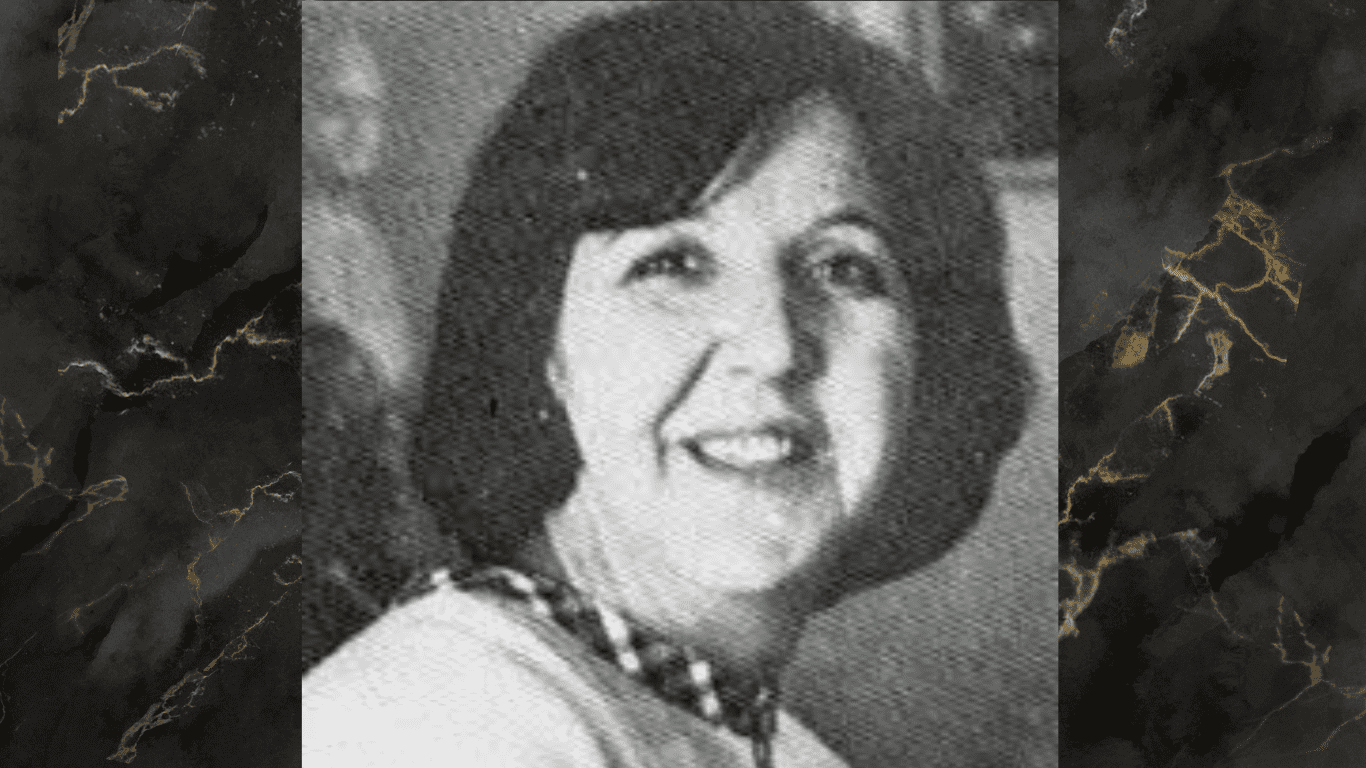Introduction
Naziha Salim is celebrated as one of the most influential figures in modern Iraqi art. Her profound impact on the cultural and artistic landscape of Iraq and the broader Middle Eastern art world has cemented her legacy as a pioneering artist, educator, and cultural icon. This comprehensive exploration delves into her life, artistic journey, key works, influences, and the lasting legacy she has left behind.
Early Life and Background
Naziha Salim was born in 1927 in Istanbul, Turkey, into a family with a rich artistic heritage. Her father, Hajji Mohammed Salim, was an esteemed painter and an officer in the Ottoman military, while her mother was a skilled amateur artist. This artistic environment profoundly influenced Naziha and her siblings. Her brother, Jawad Salim, would also become a significant figure in Iraqi art, known for his sculptural works.
Growing up, Naziha was immersed in the world of art. The Salim household was a hub of creativity, fostering a deep appreciation for the arts among its members. This nurturing environment played a crucial role in shaping Naziha’s artistic inclinations and her future career.
Education and Artistic Training
Naziha Salim’s formal education in art began at the Institute of Fine Arts in Baghdad, where she studied painting and sculpture. Recognizing her exceptional talent, she was awarded a scholarship to continue her studies at the prestigious École Nationale Supérieure des Beaux-Arts in Paris. Her time in Paris was transformative, exposing her to European modernist movements and techniques that would significantly influence her work.
At the École des Beaux-Arts, Naziha honed her skills under the tutelage of renowned artists. She was exposed to a variety of styles and techniques, including cubism, impressionism, and abstract art. This diverse exposure allowed her to develop a unique style that blended modernist influences with traditional Iraqi elements.
Artistic Style and Influences
Naziha Salim’s artistic style is characterized by a harmonious blend of modernist techniques and traditional Iraqi themes. Her work often features vibrant colors, intricate patterns, and themes centered around rural life, women, and folklore. This fusion of modern and traditional elements creates a unique and compelling visual language that resonates deeply with audiences.
a. Women in Iraqi Society:
One of the central themes in Naziha Salim’s work is the portrayal of women. She often depicted women in various roles, capturing their strength, beauty, and resilience. Her paintings celebrate womanhood and offer a commentary on the societal roles of women in Iraq. Through her art, she sought to highlight the everyday experiences and struggles of Iraqi women, giving them a prominent place in the cultural narrative.
b. Rural Life and Folklore:
Salim’s art frequently explores themes of rural life and folklore, drawing inspiration from the Iraqi countryside. Her paintings often depict scenes of village life, traditional customs, and folklore, offering a nostalgic glimpse into the country’s cultural heritage. These works are a testament to her deep connection to her roots and her desire to preserve and celebrate Iraqi traditions.
c. National Identity:
Through her art, Salim sought to express a sense of national identity. Her works are imbued with symbols and motifs that reflect the cultural and historical legacy of Iraq. By integrating these elements into her paintings, she created a powerful medium for cultural expression and identity.
Major Works and Themes
Naziha Salim’s body of work is vast and diverse, encompassing a range of themes and styles. Some of her most notable works include:
a. The Village Women:
This painting is a striking portrayal of rural Iraqi women, depicted in vibrant colors and intricate patterns. The work captures the essence of village life, highlighting the strength and resilience of the women who form the backbone of these communities.
b. Harvest Season:
In this piece, Salim depicts the harvest season in an Iraqi village. The painting is rich in detail, showcasing the various stages of the harvest and the communal effort involved. The use of bright, earthy tones evokes the warmth and vibrancy of the rural landscape.
c. Motherhood:
A recurring theme in Salim’s work is motherhood. This painting portrays a mother with her child, symbolizing the nurturing and protective role of women in society. The tender, intimate scene is rendered in soft, warm colors, emphasizing the emotional bond between mother and child.
d. Folklore and Mythology:
Salim’s fascination with folklore and mythology is evident in several of her works. These paintings often feature scenes from traditional Iraqi stories, brought to life through her vivid imagination and skilled brushwork.
Contributions to Iraqi Art and Education
In addition to her achievements as an artist, Naziha Salim played a crucial role in the development of the Iraqi art scene. After returning to Iraq from Paris, she became a professor at the Institute of Fine Arts in Baghdad. Her influence as an educator was profound, mentoring a new generation of Iraqi artists and promoting the importance of art education.
Salim was instrumental in establishing several art institutions and initiatives aimed at nurturing young talent and preserving Iraq’s rich artistic heritage. She was a founding member of the Al-Ruwwad (The Pioneers) group, which sought to revive and promote traditional Iraqi art forms. Through her teaching and mentorship, she inspired countless students to pursue careers in art and contributed to the flourishing of the Iraqi art community.
Naziha Salim’s Legacy
Naziha Salim’s legacy extends far beyond her lifetime. She passed away in 2008, but her work continues to inspire and influence artists and art enthusiasts around the world. Her contributions to art and culture have been recognized through numerous exhibitions and retrospectives, celebrating her life and work.
Her paintings are held in high esteem and are part of prestigious collections in museums and galleries worldwide. Salim’s art has been featured in exhibitions in Europe, the Middle East, and North America, bringing her unique perspective and cultural heritage to a global audience.
Naziha Salim’s Influence on Contemporary Iraqi Art
Salim’s impact on contemporary Iraqi art is undeniable. Her approach to integrating traditional themes with modernist techniques paved the way for future generations of artists. Today, many Iraqi artists draw inspiration from her work, continuing the legacy of cultural fusion that Salim so masterfully embodied.
Her emphasis on portraying everyday life and the experiences of women has resonated with many contemporary artists, who continue to explore these themes in their work. Salim’s dedication to preserving and celebrating Iraqi culture through art has also inspired a renewed interest in traditional art forms and practices.
Recognitions and Honors
Throughout her career, Naziha Salim received various accolades and honors in recognition of her contributions to art and culture. These honors serve as a testament to her enduring impact and the high regard in which she is held within the art community.
Some of the notable recognitions include:
a. Order of the Two Rivers:
Salim was awarded the Order of the Two Rivers, one of Iraq’s highest civilian honors, in recognition of her contributions to the country’s cultural heritage.
b. Arab Women of the Year:
In 2006, she was named one of the Arab Women of the Year by the Arab League, acknowledging her influence and achievements in the arts.
c. International Exhibitions:
Salim’s work has been exhibited in numerous international exhibitions, showcasing her talent and the rich cultural heritage of Iraq to a global audience.
Conclusion
Naziha Salim’s life and work represent a significant chapter in the history of Iraqi art. Her dedication to capturing the essence of her culture, her role as an educator, and her influence on future generations have left an indelible mark on the world of art. For those seeking to understand the richness of Iraqi cultural heritage and the evolution of its art scene, Naziha Salim’s work offers a profound and insightful journey.
Further Reading and Resources
For those interested in exploring more about Naziha Salim, the following resources provide a wealth of information:
a. Books and Publications:
There are several books and publications that delve into Naziha Salim’s life and work, offering detailed analyses and collections of her art. Notable titles include “Naziha Salim: A Life in Art” and “The Art of Iraq: A History of Iraqi Painting.”
b. Exhibitions and Galleries:
Many art galleries and museums around the world feature Salim’s work. Visiting these exhibitions provides an opportunity to experience her art firsthand and gain a deeper appreciation of her contributions.
FAQs about Naziha Salim
Q1: Who is Naziha Salim?
A1: Naziha Salim was a pioneering Iraqi artist known for her contributions to modern Iraqi art. She was also an influential educator and a prominent figure in promoting Iraqi cultural heritage.
Q2: What are the main themes in Naziha Salim’s artwork?
A2: Naziha Salim’s artwork often features themes such as women in Iraqi society, rural life, folklore, and national identity. Her work blends modernist techniques with traditional Iraqi elements.
Q3: Where did Naziha Salim study art?
A3: Naziha Salim studied at the Institute of Fine Arts in Baghdad and continued her education at the École Nationale Supérieure des Beaux-Arts in Paris, where she was influenced by European modernist movements.
Q4: What impact did Naziha Salim have on Iraqi art?
A4: Naziha Salim played a crucial role in the development of the Iraqi art scene. She was a professor at the Institute of Fine Arts in Baghdad, mentoring many young artists and promoting the importance of art education.
Q5: What are some notable works by Naziha Salim?
A5: Some notable works by Naziha Salim include “The Village Women,” “Harvest Season,” “Motherhood,” and various pieces inspired by Iraqi folklore and mythology.
Q6: How has Naziha Salim been recognized for her contributions?
A6: Naziha Salim received numerous honors, including the Order of the Two Rivers and being named one of the Arab Women of the Year. Her work has been exhibited internationally, highlighting her influence and achievements.
Q7: What legacy did Naziha Salim leave behind?
A7: Naziha Salim left an enduring legacy as an artist and educator. Her work continues to inspire contemporary Iraqi artists, and her contributions to art and culture are celebrated through exhibitions and retrospectives.
Q8: How can I learn more about Naziha Salim’s art?
A8: To learn more about Naziha Salim’s art, you can explore books and publications about her life, visit exhibitions and galleries featuring her work, and access online resources such as the Iraqi Artists Association and the Arab World Institute.




